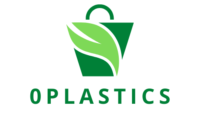The future of plastic alternatives holds great promise and is integral to achieving a more sustainable future. Here’s how these alternatives are shaping the path to sustainability:
1. Reduced Environmental Impact:
- Plastic alternatives, particularly biodegradable and compostable materials, have the potential to significantly reduce plastic pollution and its adverse effects on ecosystems and marine life. They break down naturally, leaving no persistent waste.
2. Resource Efficiency:
- Many plastic alternatives are derived from renewable resources, reducing the reliance on fossil fuels and promoting sustainable agriculture and forestry practices.
3. Circular Economy:
- Alternatives support the transition to a circular economy where materials are reused, recycled, or repurposed, minimizing the need for new production and reducing waste.
4. Innovation and Research:
- Continued research and development are driving innovation in alternative materials. This innovation fosters the creation of even more sustainable options with improved performance and cost-effectiveness.
5. Consumer Awareness:
- Increasing awareness of the environmental impact of plastic is driving consumer demand for alternatives. This demand encourages businesses to adopt more sustainable materials.
6. Policy Support:
- Governments are implementing regulations and incentives to promote the use of plastic alternatives. These policies support the adoption of sustainable materials in various industries.
7. Sustainable Supply Chains:
- The adoption of alternative materials requires more sustainable supply chains, from sourcing raw materials to production, transportation, and disposal. This promotes responsible practices across industries.
8. Collaboration and Partnerships:
- Collaboration between businesses, governments, NGOs, and consumers is essential for the successful integration of plastic alternatives into daily life. Partnerships drive innovation and raise awareness.
9. Improved Performance:
- Advances in material science are resulting in alternative materials with performance characteristics that rival or surpass traditional plastics. This makes them more attractive to businesses and consumers.
10. Economic Viability:
- As production scales up and technology advances, the cost-effectiveness of alternative materials is improving, making them increasingly competitive with traditional plastics.
Plastic alternatives, ranging from biodegradable materials to recyclable options, are at the forefront of a more sustainable future. Their adoption addresses the pressing issue of plastic pollution, conserves natural resources, reduces carbon emissions, and promotes a shift towards responsible consumption and production. With ongoing innovation, informed consumer choices, supportive policies, and industry collaboration, these alternatives will play a pivotal role in creating a more sustainable and environmentally friendly world.
